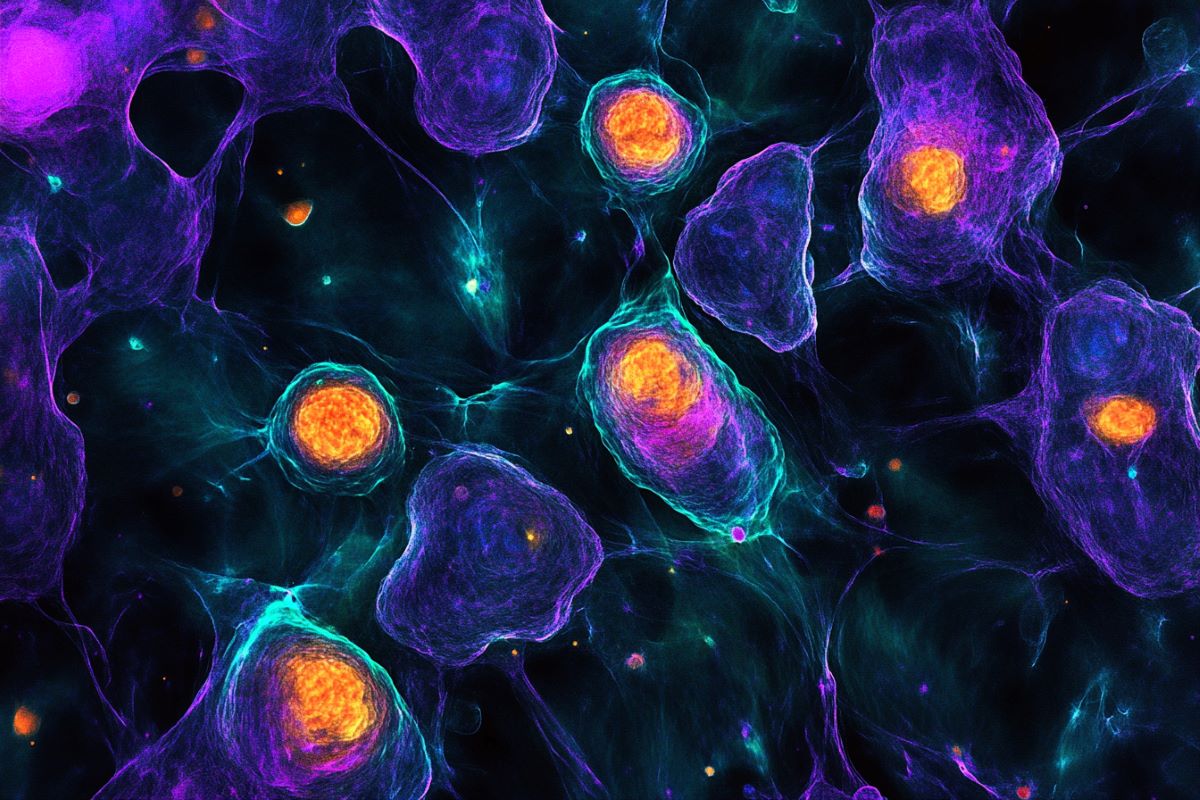Summary: Scientists have visualized the detailed structure of protein clumps linked to Huntington’s disease, offering critical insights into the condition’s molecular basis. Using advanced simulations and experimental techniques, the team identified how these clumps differ from those in Alzheimer’s and Parkinson’s diseases.
These findings not only deepen our understanding of Huntington’s disease but also pave the way for novel diagnostic tools and targeted treatments. The interdisciplinary approach bridges gaps in structural biology, offering hope for patients and advancing tools for global researchers. This study highlights the importance of studying protein aggregation in neurodegenerative diseases.
Key Facts:
- New Visualization: First atomic-level images of Huntington’s disease-related protein clumps reveal unique structural features.
- Broader Implications: Findings highlight differences between Huntington’s protein aggregates and those in Alzheimer’s and Parkinson’s diseases.
- Research Significance: Provides a foundation for developing diagnostic tools and therapies for Huntington’s and related disorders.
Source: University of Bergen
University of Bergen researcher Markus Miettinen is among the first scientists to provide a detailed description of protein clumps associated with Huntington’s disease.
The findings, which could pave the way for new diagnostic tools and treatments, were recently presented in an article in Nature Communications.

“There is hope that our research can lead to treatments for Huntington’s disease. Understanding the structure of the protein clumps is a crucial piece of the puzzle in understanding how these proteins can cause disease.
“Our new molecular findings are essential for further developing diagnostic tools and imaging techniques to detect and monitor disease proteins in patients,” says chemist Markus Miettinen from the University of Bergen, Norway and the Computational Biology Unit.
Together with an international team of researchers – including Mahdi Bagherpoor Helabad from the Max Planck Institute of Colloids and Interfaces, Irina Matlahov, Greeshma Jain, and Patrick C. A. van der Wel from the University of Groningen, Raj Kumar and Markus Weingarth from the University of Utrecht, and Jan O. Daldrop from Freie Universität Berlin – he has combined advanced computer simulations and experimental methods to achieve these groundbreaking results.
The findings are presented in the article “«”Integrative determination of atomic structure of mutant huntingtin exon1fibrils implicated in Huntington disease”, published online in Nature Communications on December 30, 2024.
Revealing Protein Clumps with a Pioneering Method
Huntington’s disease is a fatal disease caused by an inherited mutation that makes a protein form unnatural clumps. These protein clumps play a role in disease development, but until now, we have lacked a good understanding of what they look like at atomic level.
By combining various computer- and experiment-based approaches, the researchers have now managed to visualize the first detailed picture of these disease-related clumps.
The methods used are an exciting example of the interdisciplinary approach that represents the future of structural biology – and pave the way for the development of diagnostic tools and treatments that are urgently needed.
“We use advanced computer simulations to mimic the behavior of these molecules as realistically as possible. Our work bridges the gap between simulations and experiments, providing insights into data that are otherwise difficult to interpret.
“Beyond the new insights into Huntington’s disease, we have developed tools that make molecular simulations more accessible to researchers worldwide,” says Miettinen.
This type of protein clumping is not only known in connection with Huntington’s disease but also in Alzheimer’s, Parkinson’s, and other diseases. The structure of the clumps in Huntington’s disease is remarkably different from other disease proteins, opening up several new scientific questions about their properties and formation mechanisms.
Facts, Advice, and Insights
- Huntington’s disease is an inherited neurodegenerative disease.
- Protein clumps play a central role in disease development.
- New molecular findings can contribute to the development of diagnostic tools and treatments.
Funding
The research project is largely funded by foundations supporting Huntington’s disease and made possible by support from families affected by the disease and the general public.
“It is exciting to see their recognition of the importance of research into the fundamental causes of the disease,” says Miettinen.
About this Huntington’s disease research news
Author: Åshild Nylund
Source: University of Bergen
Contact: Åshild Nylund – University of Bergen
Image: The image is credited to Neuroscience News
Original Research: Open access.
“Integrative determination of atomic structure of mutant huntingtin exon 1 fibrils implicated in Huntington disease” by Markus Miettinen et al. Nature Communications
Abstract
Integrative determination of atomic structure of mutant huntingtin exon 1 fibrils implicated in Huntington disease
Neurodegeneration in Huntington’s disease (HD) is accompanied by the aggregation of fragments of the mutant huntingtin protein, a biomarker of disease progression.
A particular pathogenic role has been attributed to the aggregation-prone huntingtin exon 1 (HTTex1), generated by aberrant splicing or proteolysis, and containing the expanded polyglutamine (polyQ) segment.
Unlike amyloid fibrils from Parkinson’s and Alzheimer’s diseases, the atomic-level structure of HTTex1 fibrils has remained unknown, limiting diagnostic and treatment efforts.
We present and analyze the structure of fibrils formed by polyQ peptides and polyQ-expanded HTTex1 in vitro.
Atomic-resolution perspectives are enabled by an integrative analysis and unrestrained all-atom molecular dynamics (MD) simulations incorporating experimental data from electron microscopy (EM), solid-state NMR, and other techniques.
Alongside the use of prior data, we report magic angle spinning NMR studies of glutamine residues of the polyQ fibril core and surface, distinguished via hydrogen-deuterium exchange (HDX).
Our study provides a molecular understanding of the structure of the core as well as surface of aggregated HTTex1, including the fuzzy coat and polyQ–water interface.
The obtained data are discussed in context of their implications for understanding the detection of such aggregates (diagnostics) as well as known biological properties of the fibrils.






